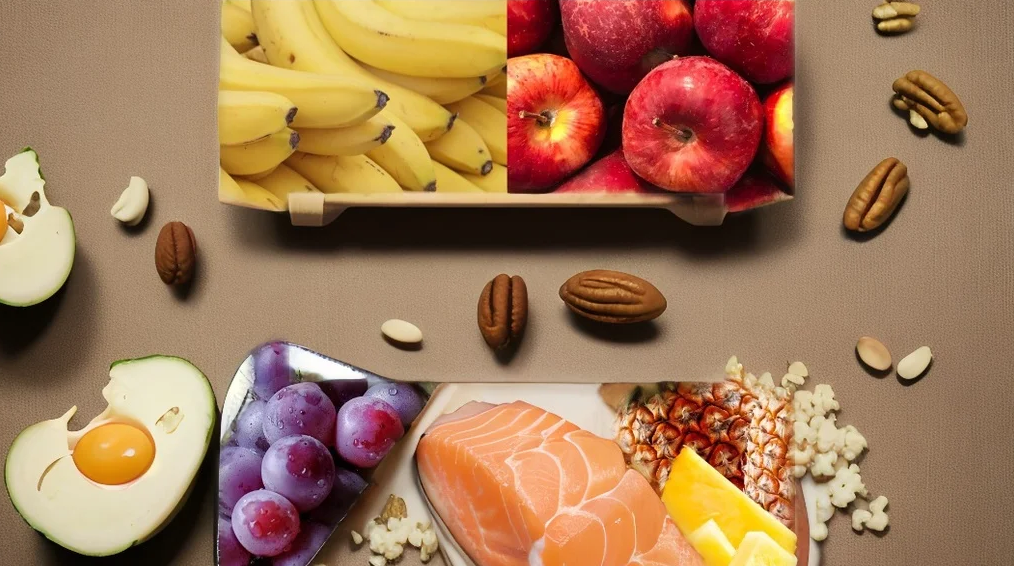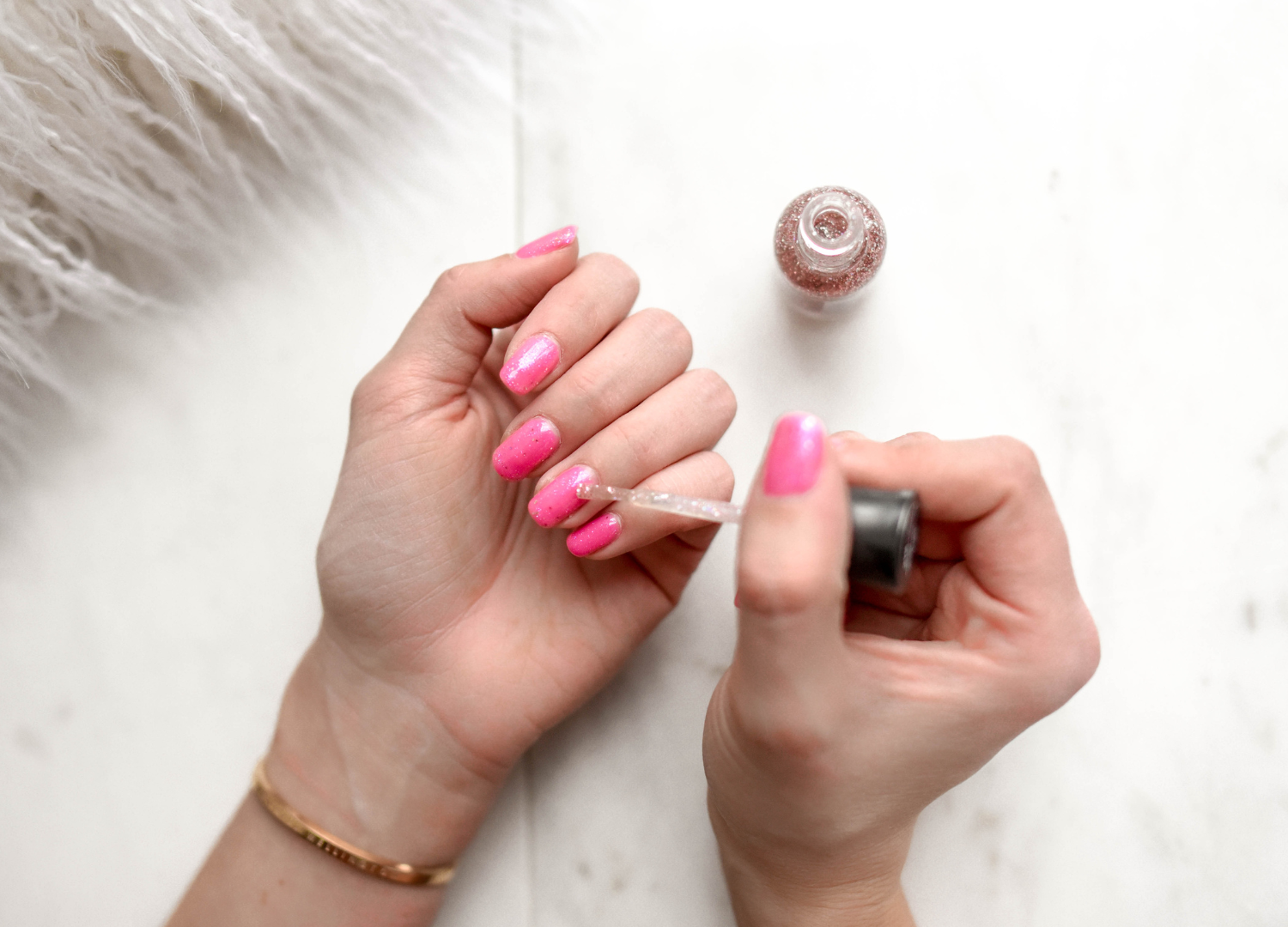
Having strong, healthy nails just makes everyday life way easier. No more annoying cracks, peels or breaks ruining your manicure. But getting those nails in great shape takes a little work. A lot of people have the wrong idea about proper nail care. The good news is, it doesn’t have to be complicated! Learn how to get stronger nails with the right diet, simple hygiene routine, and nail-friendly habits, you can grow stronger, longer nails that actually look nice too. This guide covers 8 easy tips to nourish your nails from the inside out. From the vitamin-packed foods you eat to how you treat those cuticles, small changes make a big impact.
Tip 1: Eat Nail-Fortifying Foods
Nails are made of keratin protein. Getting certain vitamins provides the building blocks for harder, healthier nails.
Biotin aids nail growth and strength by helping nail cells develop properly. Get it from eggs, nuts, cauliflower, salmon or a supplement.
Not enough folic acid (vitamin B9) can cause vertical nail ridges. Load up on folate-rich lentils, spinach, asparagus and fortified cereals.
Vitamin C helps produce keratin, the key structural protein in nails. Citrus, peppers, broccoli and strawberries pack vitamin C.

Vitamin A promotes nail bed health and prevents dryness. Find it in sweet potatoes, carrots, cantaloupe and dairy.
Filling your diet with these nail-fortifying nutrients gives you the ingredients for thicker, smoother, stronger nails.
Tip 2: Be Gentle on Your Nails
Excessive water exposure dries out nails, making them brittle and prone to breaks. Limit soaking in baths, showers, pools and doing dishes. Wear gloves when possible.
Ditch harsh, acetone-based nail polish removers that dehydrate nails. Choose gentle, non-toxic formulas instead. Also avoid rough nail files, opting instead for a high-quality nail files that promotes nail health rather than causing peeling and splitting.
When polishing, use a base coat to create a protective barrier, then a topcoat to seal in moisture and prevent chipping.
Simple habit changes to reduce chemical exposure, lock in hydration, and minimize stress on nails can go a long way. No fancy products needed - just gentle, nail-preserving practices.
Tip 3: Moisturize and Maintain Cuticles
Those thin layers of skin at the base of your nails called cuticles play an important role. They act as a seal to protect new nail growth and prevent dirt, bacteria or other icky stuff from getting in and causing infections.Learning more about proper nail hygiene can help you keep your cuticles healthy and your nails infection-free.
The key is keeping your cuticles moisturized so they don’t become dry, cracked or ragged - otherwise that protective seal is compromised. Get in the habit of massaging a nutrient-rich cuticle oil or serum into the base of your nails and surrounding skin daily. This rehydrates the whole area.
During a manicure, avoid cutting or pushing back cuticles forcefully, as this can lead to cuts that invite infection. Only carefully trim away any hangnails or ragged edges.
Tip 4: Take Nail-Strengthening Supplements
In addition to vitamins from food sources, certain supplements can help fortify nail strength and growth from the inside out.
Biotin is one of the most popular nail supplements. This vitamin B boosts keratin production and improves nail thickness and hardness when taken regularly.
Keratin supplements provide extra doses of the structural protein that makes up nails. Look for ones with hydrolyzed keratin, which is more easily absorbed.
Horsetail extract is rich in silica, a mineral that helps increase nail growth rate and prevent brittleness and peeling.
Collagen supplements aid collagen production, which is essential for nail cells to multiply and regenerate properly.
Add nail-boosting supplements to a balanced diet for an extra dose of strengthening nutrients. Just don’t exceed recommended dosages.
Tip 5: Don’t Bite or Pick
Gnawing on your nails or picking at them and your cuticles is a surefire way to wreck your nail game. These bad habits put a ton of stress on nails, leading to all kinds of damage.
You’re basically asking for splits, tears and cracks to form as the nails grow out. Not to mention opening yourself up to painful bacterial infections around the nail bed and skin from constantly exposing the area.
Nail biting and aggressive picking also messes with how nails should grow naturally, causing ridges, grooves and other wonky deformities over time. The repeated trauma just thins out and weakens those nail plates until they start peeling and breaking like crazy.
Kicking these habits takes work, but try using bitter nail polishes or bandages on your fingers to deter the behavior. Finding other ways to relieve stress can also help replace the compulsive urges. With some diligence, you can break free and regrow stronger, healthier nails.
Tip 6: Take a Polish Break
As great as having your nails constantly polished looks, your nails actually need some breathing room between manicures. Frequent use of nail polish and treatments can weaken nails over time.
Polish formulas contain solvents and other drying ingredients that rob nails of moisture and flexibility if they’re continuously coated. This can lead to brittleness, cracking and splits.
Gel manicures require roughing up the nail surface so the polish can adhere properly. Too much of this nail filing wears down the protective nail plate.
Acrylic or powder dip nails put even more stress on natural nails as they grow out. The glue and removal process is also very dehydrating.If you're looking for a gentler alternative that won't damage your natural nails, consider press-on nails for a convenient and commitment-free manicure.

Take a break every few months and go polish-free for a couple weeks. Use this time to focus on nourishing and hydrating nails.
Tip 7: File and Trim Properly
How you file and trim your nails makes a big difference in preventing cracks, splits and other damage. A little technique goes a long way.
When filing, always go in one direction-the back and forth sewing motion can cause layers to separate and peel. Use a gentle grit file and lightly shape the tips in one smooth pass.
Avoid taking off too much length at one time. Nails are strongest when you keep them trimmed to an optimal short-to-medium length. Going too short increases the risk of breaks.
For trimming, use a pair of clean nail clippers or scissors. Don’t bite or tear off edges with your teeth - that just creates rough edges that can lead to cracks and splitting.
Smooth out any rough edges with a gentle buffing using a fine grit buffer block or file. But don’t over buff, as this can thin out and weaken nail plates over time.
Tip 8: Protect Nails from Chemicals
Even once you’ve got your nail care routine down, certain chemicals can still cause dryness, brittleness and premature peeling. Be mindful of exposure.
Household cleaners, detergents, and even soap can strip away natural oils that keep nails pliable. Always wear gloves when using harsh products.
Chlorine from pools and hot tubs can also dehydrate and weaken nails over time. Rinse nails thoroughly after swimming.
If you work with your hands a lot, whether it’s construction, hairstyling, healthcare or another field, make sure to moisturize frequently to counteract chemical and environmental exposures.
Using acetone-based nail polish removers sparingly helps too, as acetone is extremely dry for nails.
Get Stronger, Healthier Nails
You can absolutely rock gorgeous, resilient nails with some basic nail care habits. Fuel up on keratin-building vitamins like biotin, vitamin C and folic acid. Moisturize those cuticles daily and avoid rough picking that can tear nails. Take breaks from harsh polishes and treatments to let nails breathe. Be gentle when filing and trimming. And steer clear of drying chemicals as much as possible. It just takes making nail health a priority. With a little discipline following these tips, you’ll be leaving cracks, splits and breaks in the dust for good. Stronger, smoother, longer nails are totally within reach.


